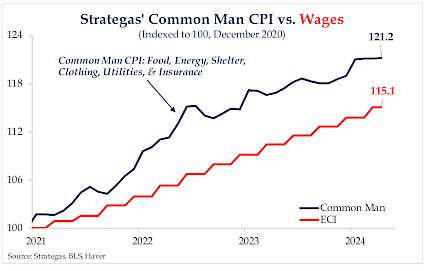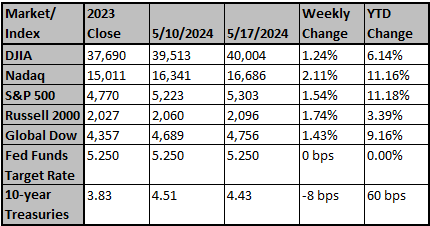The primary justification for excluding food and energy from the Bureau of Labor Statistics’ “core” CPI number is that the data are noisy and, therefore, difficult for economists to forecast. Naturally, that raises another question: Does the data exist for economists and policymakers to make their decisions, or do they exist for regular people when deciding how to run their economic lives?
Excluding food, energy, and housing from the “supercore” measure seems a little much because, let’s face it, eating, staying warm, and protecting oneself from hypothermia seem pretty “supercore” for the average person. I would last about 10 minutes in the wild. In any event, we created our Common Man CPI to focus on items that people must buy regularly – food, energy, shelter, clothing, utilities, and insurance.
We exclude anything we would deem discretionary, from flat-panel television screens to flights to Fort Lauderdale. Yesterday’s Common Man CPI grew at 3.8% y/y; it exceeded the headline inflation number for the ninth consecutive month. Our Common Man CPI has also exceeded the headline number in 34 of the 40 months of the Biden Administration. As an election issue, President Biden may run out of time to turn voters’ perceptions around.
Source: Strategas
Chart reflects price changes, not total return. Because it does not include dividends or splits, it should not be used to benchmark performance of specific investments. Data provided by Refinitiv.
Sincerely,
Fortem Financial
(760) 206-8500
team@fortemfin.com
Latest News
Fed's Waller sees some progress on inflation, no rate hike needed
Federal Reserve Governor Christopher Waller on Tuesday put a pin in speculation that interest rates may need to rise again, saying the latest inflation data is "reassuring" and the U.S. central bank's policy rate is set appropriately.
Reuters
EU countries back landmark artificial intelligence rules
European Union countries on Tuesday backed a political deal clinched in December last year that sets landmark rules on artificial intelligence used in a wide swathe of industries and in everyday life.
Reuters


